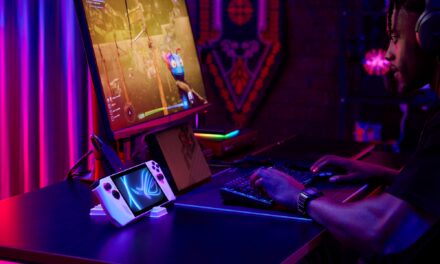By Ernst Wittmann, TCL Regional Manager for Southern & East Africa and Global Operator Account Manager for Africa
The term ‘augmented reality’ (AR) was coined more than three decades ago and basic AR apps for mobile devices have been around since at least 2008. Yet, despite the hype from app developers and technology manufacturers, many consumers have wondered what all the fuss is about.
The AR game, Pokémon GO, brought the technology to mainstream attention when it launched in 2016. It attracted more than 230 million players in its first year, but the excitement quickly died down. But the reality is that AR has quietly evolved from a high-tech gimmick into a useful feature many of us use every day without thinking about it.
AR overlays computer-generated digital information on top of a digital display such as a smartphone screens. It uses tech such as apps, consoles, screens, or projections, to combine digital information with the real-world environment—like making it look like there’s a Pokémon on your street when you point your smartphone camera using the app.
A few major developments have transformed the tech into an integral part of our lives since 2016. The first of these is the proliferation of smartphones that can handle AR applications. According to Statista, by end 2024 there will be an estimated 1.7 billion mobile AR user devices worldwide, up from 200 million in 2015.
Another important step forward was the launch of AR developer tools and platforms, such as the introduction of Google’s ARCore for Android in 2017. These developer toolkits make it faster and easier for developers to deploy AR functionality and apps to a wide range of Android devices, including smartphones.
Big steps forward in artificial intelligence have also catalysed growth in AR. AI techniques, like computer vision and machine learning, enable AR apps to recognise and track objects in real-time, a critical component for creating accurate and interactive AR experiences.
AR apps already in wide use
The result is that AR usage has exploded over the past five years or so:
Social media: Most social media apps—including the likes of TikTok, Snapchat and Instagram— offer some AR features, such as face filters, 3D effects and virtual backgrounds. Snapchat reports that 250 million people uses its AR features and tools every day.
Navigation: Google Maps offers AR directions, which help you navigate by overlaying digital arrows and labels onto the real world through your phone’s camera, making walking directions more intuitive.
Translation and object identification: Apps such as Google Lens is a powerful AR app let you identify objects and translate text using your smartphone camera. Great for identifying plants, animals or landmarks or translating menus or signage when travelling.
Shopping: Stores around the world offer apps with AR features to help you visualise what some furniture will look like in your living room or how clothes or lipstick will look on you.
Education: Apps like Google Lens and AR features in mobile learning platforms enable users to explore objects or historical landmarks in 3D. Some educational apps allow students to explore anatomy or geography through AR-enhanced models.
That’s just the start—there are some even more imaginative applications, like Dyson’s CleanTrace, which shows where you vacuumed in real time. SketchAR, meanwhile, turns your Android phone into a drawing assistant. It overlays images onto real-world surfaces, which you can then trace or use as a guide to improve your drawing skills.
What’s coming down the line?
We are just at the start of the ‘extended reality’ (XR) revolution, which embraces AR and virtual reality (VR). One of the major trends is that XR headsets are becoming more affordable, comfortable and accessible. Much like smartwatches or smart speakers, they complement, rather than replace your handset.
The blurring of the lines between AR and VR is another trend. VR immerses you in a computer-generated environment that simulates reality, allowing you to interact with a 3D world through your senses. Some XR headsets allow you to see and interact with your physical surroundings while still using the VR headset for immersive experiences.
Generative AI technologies like ChatGPT and DALL-E will also unlock exciting new AR features. For example, developers could use this tech to create on-demand virtual content tailored to your requests or behaviour. For example, Snapchat’s AR filters are already enhanced with generative AI, allowing for highly customised and creative effects.
AR is sure to change how we interact with the world in the years to come through immersive experiences in education, healthcare, entertainment, and beyond. The integration of AR with other emerging technologies, such as AI and 5G, will further accelerate its impact, making AR a fundamental aspect of our digital experiences.



























